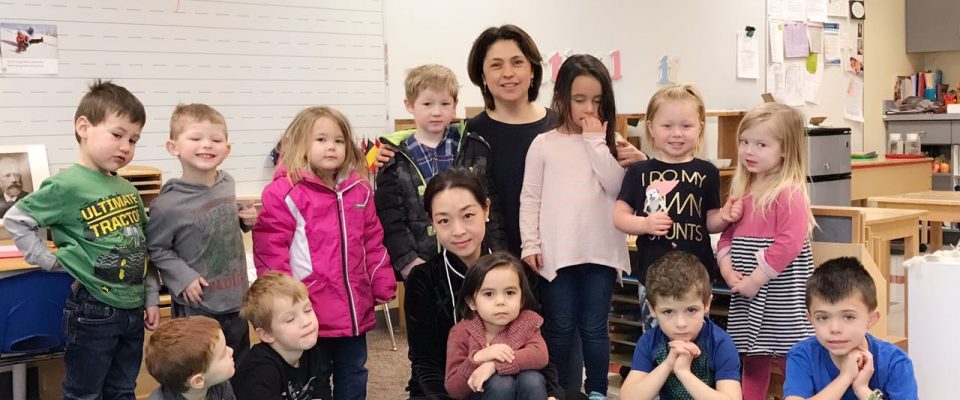By Sally Korte (IMS ’15)
Maria Montessori stated that the child perfects himself and that the only thing that the adult has to do is to prepare the environment for the child to fully succeed. This statement stuck with me at the beginning of the school year. Is this true? If so, the only way that I will be able to witness this discovery will be to fully control my personality in the environment, such as by not intervening with unnecessary help. And this requires that I grow in humility to truly believe in the child’s perfect inner guidance.
Enrolling in my program at the beginning of the fall, Peter was almost five and this was his first time attending any learning environment. While many of our students had been attending the program two or three years, Peter was somehow overwhelmed by the abilities of his peers. Also, since he didn’t seem comfortable in my presence, he preferred to sit down next to his friends to just observe what they were doing.
One morning, Peter was sitting down by a student with a great ability for coloring, watching him work on a coloring in a book that I prepared with pictures of different insects we had been studying. So, Peter approached me and ask me to give him a book of insects also, which I did. When he started coloring, I noticed that he held the pencil in a very awkward manner and had great difficulty making the various lines. He tried to draw with his other hand and then both hands together, all the while without any success.
Peter clearly saw that his work didn’t look like the other students that he has put so much time observing. When I made eye contact with him and approached to offer a lesson on how to hold the pencil properly, he quickly got up and put all the materials away. So, I noticed that my presence wasn’t welcome by him, and that the only way to help him was indirectly by preparing the environment.
Over next few weeks, Peter just walked around the room, stopping to watch a student who was working on an activity that he found interesting. He would then try the activity himself, but his hand and finger muscles were not well enough developed for a good result. Soon the other students took on the job to help and teach him themselves.
I limited my involvement to preparing materials to help him with his hand coordination problem. For example, at the snack table, I provided cheese string that he had to open. When he couldn’t open the package himself, he would ask another boy to show him how to do it. I noticed that the other child applied the IMS technique, cooperative touching by holding Peter’s fingers over his to show how much weight he needed to apply, so that Peter could eventually do it himself. Other activities that I prepared were peeling carrots, slicing apples, and arranging fruit kabobs. Since he also seems to enjoy working with tools, I provided hammering and drilling activities that he chose to do every day. All of these activities were helping him coordinate his hands to be ready for the coloring activity that he wanted to do so badly before.
Every day he tried to color, but with great difficulty until it happened that his work was outstanding!. And he knew it and was so proud of his work. Peter also kept observing the other students on their work with math and reading. And, in the same way, just by observing, he learned a great detail about each concept.
The last week of school, he was designing his own books using the metal inserts and showed me one of this books. I was amazed of the details and the beauty of his work and noticed that the other students saw his new ability also, as they would sit down to observe him just like he had done with them before. Now, the other children copy Peter’s designs.
Watching Peter’s develop unfold over this period of time, I could see how his “teacher within” was guiding him along the way. And, I could also see that “other children” in the environment are so important in the process of learning.
Sally Korte is teacher and director of St. James Montessori School in Augusta, Kansas.

